Related Research Articles
Andreas Capellanus, also known as Andrew the Chaplain, and occasionally by a French translation of his name, André le Chapelain, was the 12th-century author of a treatise commonly known as De amore, and often known in English, somewhat misleadingly, as The Art of Courtly Love, though its realistic, somewhat cynical tone suggests that it is in some measure an antidote to courtly love. Little is known of Andreas Capellanus's life, but he is presumed to have been a courtier of Marie de Champagne, and probably of French origin.
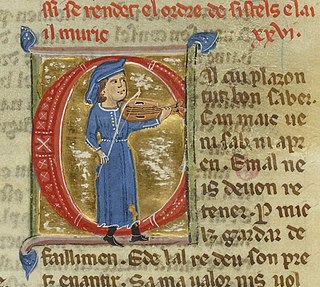
A troubadour was a composer and performer of Old Occitan lyric poetry during the High Middle Ages (1100–1350). Since the word troubadour is etymologically masculine, a female troubadour is usually called a trobairitz.
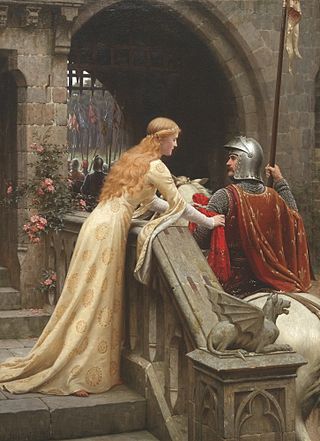
Courtly love was a medieval European literary conception of love that emphasized nobility and chivalry. Medieval literature is filled with examples of knights setting out on adventures and performing various deeds or services for ladies because of their "courtly love". This kind of love was originally a literary fiction created for the entertainment of the nobility, but as time passed, these ideas about love spread to popular culture and attracted a larger literate audience. In the high Middle Ages, a "game of love" developed around these ideas as a set of social practices. "Loving nobly" was considered to be an enriching and improving practice.

Modern lyric poetry is a formal type of poetry which expresses personal emotions or feelings, typically spoken in the first person.
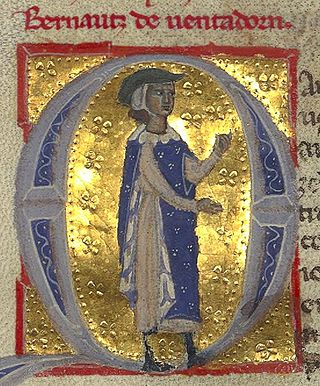
Bernart de Ventadorn was a French poet-composer troubadour of the classical age of troubadour poetry. Generally regarded as the most important troubadour in both poetry and music, his 18 extant melodies of 45 known poems in total is the most to survive from any 12th-century troubadour. He is remembered for his mastery as well as popularization of the trobar leu style, and for his prolific cançons, which helped define the genre and establish the "classical" form of courtly love poetry, to be imitated and reproduced throughout the remaining century and a half of troubadour activity.

Peter Benjamin Golden is an American professor emeritus of History, Turkish and Middle Eastern Studies at Rutgers University. He has written many books and articles on Turkic and Central Asian studies, such as An introduction to the history of the Turkic peoples.
Michael Davidson is an American poet.
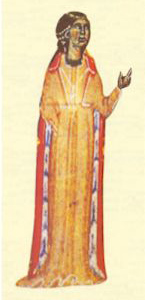
The trobairitz were Occitan female troubadours of the 12th and 13th centuries, active from around 1170 to approximately 1260. Trobairitz is both singular and plural.
Nathaniel Tarn is a French-American poet, essayist, anthropologist, and translator. He was born in Paris to a French-Romanian mother and a British-Lithuanian father. He lived in Paris until the age of seven, then in Belgium until age 11; when World War II began, the family moved to England. He emigrated to the United States in 1970 and taught at several American universities, primarily Rutgers, where he was a professor from 1972 until 1985. He has lived outside Santa Fe, New Mexico, since his retirement from Rutgers.
Bernard O'Donoghue FRSL is a contemporary Irish poet and academic.
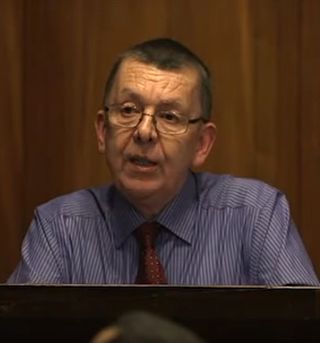
Brian Evan Anthony Davies is a British philosopher, Roman Catholic priest, and friar. He is Distinguished Professor of Philosophy, Fordham University, and author of An Introduction to the Philosophy of Religion, now in its fourth English edition, which has been translated into five languages.

Peirol or Peiròl was an Auvergnat troubadour who wrote mostly cansos of courtly love in the late twelfth and early thirteenth centuries. Thirty-four surviving poems written in Occitan have been attributed to him; of these, seventeen have surviving melodies. He is sometimes called Peirol d'Auvergne or Peiròl d'Auvèrnha, and erroneously Pierol.
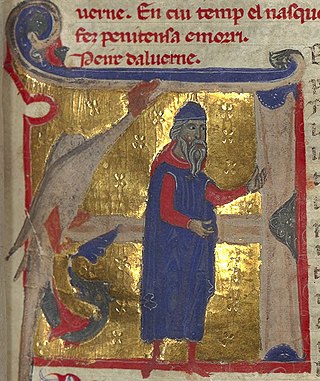
Peire d'Alvernhe or d'Alvernha was an Auvergnat troubadour with twenty-one or twenty-four surviving works. He composed in an "esoteric" and "formally complex" style known as the trobar clus. He stands out as the earliest troubadour mentioned by name in Dante's Divine Comedy.
Alegret was a Gascon troubadour, one of the earliest lyric satirists in the Occitan tongue, and a contemporary of Marcabru. Only one sirventes and one canso survive of his poems. Nonetheless, his reputation was high enough that he found his way into the poetry of Bernart de Ventadorn and Raimbaut d'Aurenga. The work of Alegret is also intertextually and stylistically related to that of Peire d'Alvernhe.
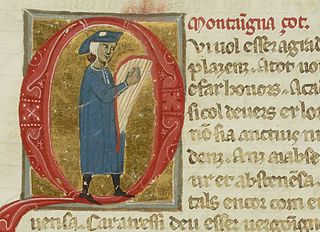
Guilhem de Montanhagol was a Provençal troubadour, most likely active in Toulouse, but known in the courts of Provence, Toulouse, Castile, and Aragon. Guilhem left behind seven cansos and six sirventes. He also left behind one tenso with Sordello and his total surviving output comes to fourteen pieces.
Sylvia Huot is a professor of Medieval French Literature at the University of Cambridge and fellow of Pembroke College. She is the author of several internationally renowned books on Medieval French Literature and the leading expert on the manuscripts of Roman de la Rose, having published extensively on its iconography.
Derek Attridge FBA is a South African-born British academic in the field of English literature. He is Emeritus Professor of English and Related Literature at the University of York, having retired from the university in 2016, and is a Fellow of the British Academy. Attridge undertakes research in South African literature, James Joyce, modern fiction, deconstruction and literary theory and the history and performance of poetry. He is the author or editor of thirty books, and has published eighty articles in essay collections and a similar number in journals. He has held a Guggenheim Fellowship and a Leverhulme Research Professorship, and Fellowships at the National Humanities Center, the Bogliasco Foundation, the Camargo Foundation, and The Stellenbosch Institute for Advanced Study, the Freiburg Institute for Advanced Studies, and All Souls and St. Catherine's Colleges, Oxford. Among the visiting positions he has held have been professorships at the American University of Cairo, the University of Sassari, the University of Cape Town, Northwestern University, Wellesley College, and the University of Queensland.
Simon Gaunt was a professor of French literature at King's College London, where he was Head of the French Department and Head of the School of Humanities. He was past president of the Society for French Studies (2006-8), a Fellow of King's College, London from 2015 and an Honorary Fellow of St. Catharine's College, Cambridge from 2016.
James Simpson is an Australian-British-American medievalist currently serving as the Donald P. and Katherine B. Loker Professor of English at Harvard University.

Marilee Lindemann is an associate professor of English at the University of Maryland, College Park and the director of the LGBT Studies Program. Lindemann received her Ph.D in English from Rutgers University and her B.A. in English and journalism from Indiana University. She has taught at the University of Maryland since 1992. She is a prominent scholar of American writer Willa Cather and is also a well-known blogger, and the editor of a forthcoming scholarly collection engaging with the phenomenon of blogs. She was the 2007 winner of the Modern Language Association's Michael Lynch Service Award. Dr. Lindemann served on the editorial board of American Literature from 2001 to 2003; on the board of managing editors of American Quarterly from 2001 to 2003; and has served on the advisory board of the Cather Archive since 2006. She has received a National Endowment for the Humanities Faculty Graduate Study Program for Historically Black Colleges and Universities Fellowship and a Woodrow Wilson National Fellowship Foundation Research Grant in Women's Studies. A native of Indiana, she lives with her partner of 26 years, Martha Nell Smith, in Takoma Park, Maryland.
References
- ↑ "Vision and the Body: The Fountain of Narcissus and Lacan's Inverted Bouquet". medieval-studies.rutgers.edu. Rutgers University. 16 February 2007. Archived from the original on 19 February 2007. Retrieved 13 June 2023.